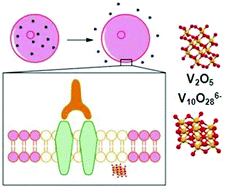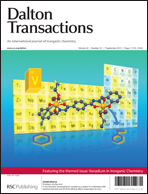Raft localization of Type I Fcε receptor and degranulation of RBL-2H3 cells exposed to decavanadate, a structural model for V2O5
Abstract
Vanadium oxides (VOs) have been identified as low molecular weight sensitizing agents associated with occupational asthma and compromised pulmonary immunocompetence. Symptoms of adult onset asthma result, in part, from increased signal transduction by Type I Fcε receptors (FcεRI) leading to release of vasoactive compounds including histamine from mast cells. Exposure to (VOs) typically occurs in the form of particles which are insoluble. Upon contact with water or biological fluids, (VOs) form a series of soluble oxoanions, one of which is decavanadate, V10O286− abbreviated V10, which is structurally related to a common vanadium oxide, that is vanadium pentoxide, V2O5. Here we investigate whether V10 may be initiating plasma membrane events associated with activation of FcεRI signal transduction. We show that exposure of RBL-2H3 cells to V10 causes a concentration-dependent increase in degranulation of RBL-2H3 and, in addition, an increase in plasma membrane lipid packing as measured by the fluorescent probe, di-4-ANEPPDHQ. V10 also increases FcεRI accumulation in low-density membrane fragments, i.e., lipid rafts, which may facilitate FcεRI signaling. To determine whether V10 effects on plasma membrane lipid packing were similarly observed in Langmuir monolayers formed from dipalmitoylphosphatidylcholine (DPPC), the extent of lipid packing in the presence and absence of V10 and vanadate was compared. V10 increased the surface area of DPPC Langmuir monolayers by 6% and vanadate decreased the surface area by 4%. These results are consistent with V10 interacting with this class of membrane lipids and altering DPPC packing.

- This article is part of the themed collection: Vanadium in Inorganic Chemistry

 Please wait while we load your content...
Please wait while we load your content...